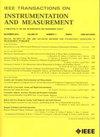Adaptive Maximum Second-Order Cyclostationarity Blind Deconvolution Based on Diagnostic Feature Spectrum for Rolling Bearing Fault Diagnosis
IF 5.6
2区 工程技术
Q1 ENGINEERING, ELECTRICAL & ELECTRONIC
IEEE Transactions on Instrumentation and Measurement
Pub Date : 2025-02-13
DOI:10.1109/TIM.2025.3538085
引用次数: 0
Abstract
Maximum cyclostationarity blind deconvolution effectively enhances the periodic components by maximizing the cyclostationary behavior associated with the fault-inducing source. However, the validity of maximum cyclostationarity blind deconvolution depends on prior knowledge of bearing characteristic frequency, which is influenced by the shaft rotation frequency and bearing elements. In addition, it tends to generate false cyclostationary components when the incorrect cyclic frequency is provided as input. To address the above problems, a diagnostic feature-based adaptive maximum cyclostationarity blind deconvolution (DFACYCBD) is proposed for identifying the incipient faults of bearings. A novel estimator known as the diagnostic feature spectrum (DFS) is introduced in this method, which is constructed based on a feature at each frequency in the enhanced envelope spectrum (EES). Specifically, the cyclostationary information of noisy signals is first extracted using the fast spectral correlation (Fast-SC) and then converted into the equal-frequency interval harmonic structure (EIHS) within EES. Subsequently, DFS is used to calculate the cyclic frequency, with the estimated result considered as the desired cyclic frequency. Even in conditions with heavy background noise, DFS is proven to yield precise estimated results as the cyclic frequency to input. Finally, the simulated signal and bearing vibration datasets are applied to validate the efficacy of DFACYCBD.求助全文
约1分钟内获得全文
求助全文
来源期刊

IEEE Transactions on Instrumentation and Measurement
工程技术-工程:电子与电气
CiteScore
9.00
自引率
23.20%
发文量
1294
审稿时长
3.9 months
期刊介绍:
Papers are sought that address innovative solutions to the development and use of electrical and electronic instruments and equipment to measure, monitor and/or record physical phenomena for the purpose of advancing measurement science, methods, functionality and applications. The scope of these papers may encompass: (1) theory, methodology, and practice of measurement; (2) design, development and evaluation of instrumentation and measurement systems and components used in generating, acquiring, conditioning and processing signals; (3) analysis, representation, display, and preservation of the information obtained from a set of measurements; and (4) scientific and technical support to establishment and maintenance of technical standards in the field of Instrumentation and Measurement.
 求助内容:
求助内容: 应助结果提醒方式:
应助结果提醒方式:


